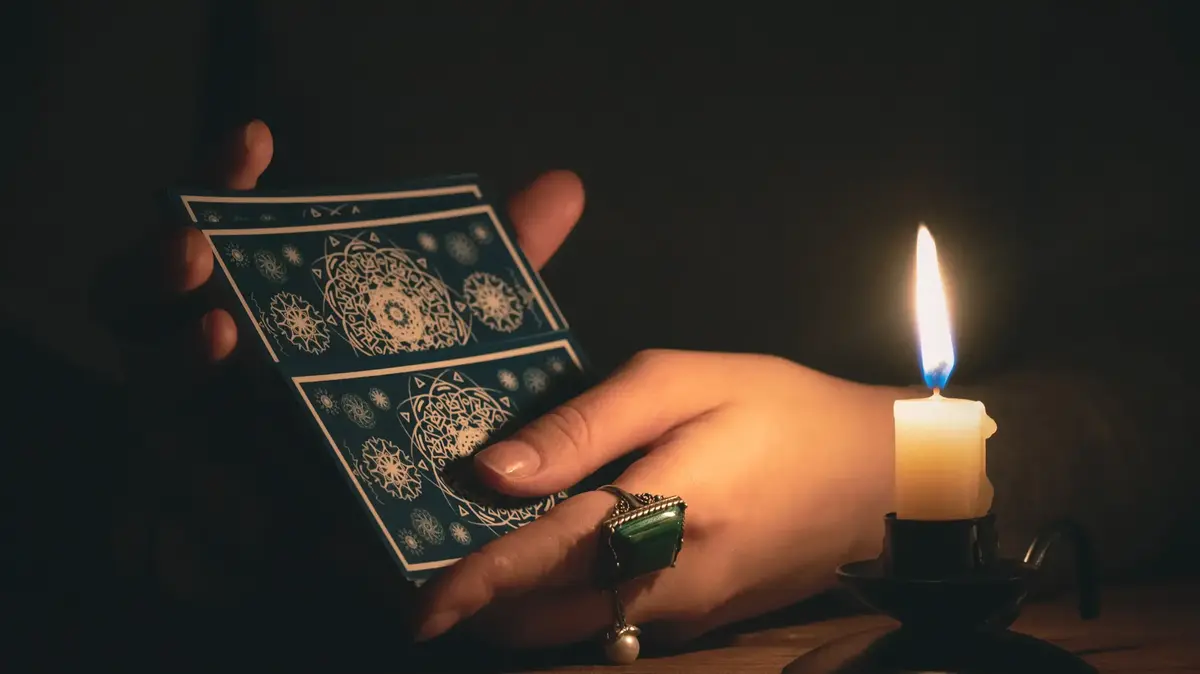Icon: enlarge
Photo: Michael Niestedt / DER SPIEGEL
Playing card magic requires either excellent manual dexterity - or sophisticated math.
The trick described here naturally falls into the second category.
You are sitting at a table with Britta and Bert.
The two have come up with a card trick that they want to perform.
You use a skat game with 32 cards.
It is a French hand with clubs, spades, hearts and diamonds and the card values of seven, eight, nine, ten, jack, queen, king, ace.
The cards are shuffled and you randomly draw five cards that you give Bert.
He looks at the cards, chooses one of them and places it on the table with the back facing up.
He gives the other four cards to Britta.
She doesn't know the card Bert has chosen and looks at the four cards he gave her.
Britta thinks about it for a moment and then names the card Bert has chosen.
You turn the card over - and sure enough, Britta was right.
Do you see through this trick?
Please scroll down for the solution!
Photo: Michael Niestedt / DER SPIEGEL
solution
Bert is clearly conveying information via the four cards he gives Britta.
Britta can deduce from this which card he has kept for himself.
There are 32 different cards.
If we imagine that the cards are numbered from 1 to 32 (from seven of clubs = 1, eight of clubs = 2, ... to ace of diamonds = 32), Bert could try to use the four cards he passes to find this 32 to encode different card numbers.
He could put the four cards he gives Britta in a certain order.
To do this, he first has to sort the four cards in his head according to the order of priority that results from the numbering from 1 to 32 described.
The card with the lowest number is called A, the one with the second lowest number B, the one with the third lowest number is called C and the card with the highest number is called D.
Can Bert code the number of the fifth card by sorting the four cards?
The following table shows its options:
We see: With four cards, only 24 numbers can be coded in this way - too few, because the stack contains 32 cards.
Even if we subtract the four cards that Britta gets, that's not enough.
Bert and Britta must have proceeded a little more ingeniously.
For example as follows:
There are four color values from clubs to diamonds.
Therefore, among the five cards there are always at least two with the same color value - for example, two clubs.
So Bert chooses two cards with the same color value, for example eight of clubs and king of clubs.
There are only eight cards of a suit.
Let's imagine that the cards form a circle sorted according to their order.
Next to the seven is the eight in clockwise order, then the nine and so on up to the ace. And the ace is followed by the seven again - they are in a circle right next to each other.
Just like the 12 and 1 on a clock face.
Any two cards in this circle are no more than four cards apart.
The eight of clubs in our example lies three cards clockwise next to the king of clubs.
Bert then takes the card that is in front of the second card, clockwise - the King of Clubs.
This card is the first of four cards he gives Britta.
The second of the two cards, here the eight of clubs, is the card that Bert keeps.
On the first card in the pile of four cards that Bert passes on, Britta can immediately see the color value of the card that Bert has kept: clubs.
Bert now has three cards with which he can encode the distance between the two chosen cards.
The distance can be a maximum of four.
In our example of king and eight, the distance is three.
When coding the distance between the cards, Bert proceeds as described above.
He sorts the three cards in his head according to their number.
The card with the smallest number is A, the one with the middle number is B, and the card with the largest number is C.
With three cards, Bert can encode six different values - two more than actually necessary:
Britta recognizes the color value from the first card and the distance between the card chosen by Bert and the first card from the order of the three other cards.
Actually not that difficult, is it?
This very nice card trick goes back to the mathematician William Fitch Cheney.
In 2003 there was a longer article about it in Math Horizons magazine.
I came across the trick in the book "Mathematical Riddles for Lovers" by Peter Winkler, published in 2004.
If you missed a puzzle from the past few weeks, here are the ten most recent episodes:
The sawed-up horseshoe
The strange clock
Lies, Truths, and a Virus
How long does the chain have to be?
Total known, numbers sought
The bar castling
Balanced record collection
How many flowers are there?
The clever carpet seller
Lots of lies and a wedding
Icon: The mirror






